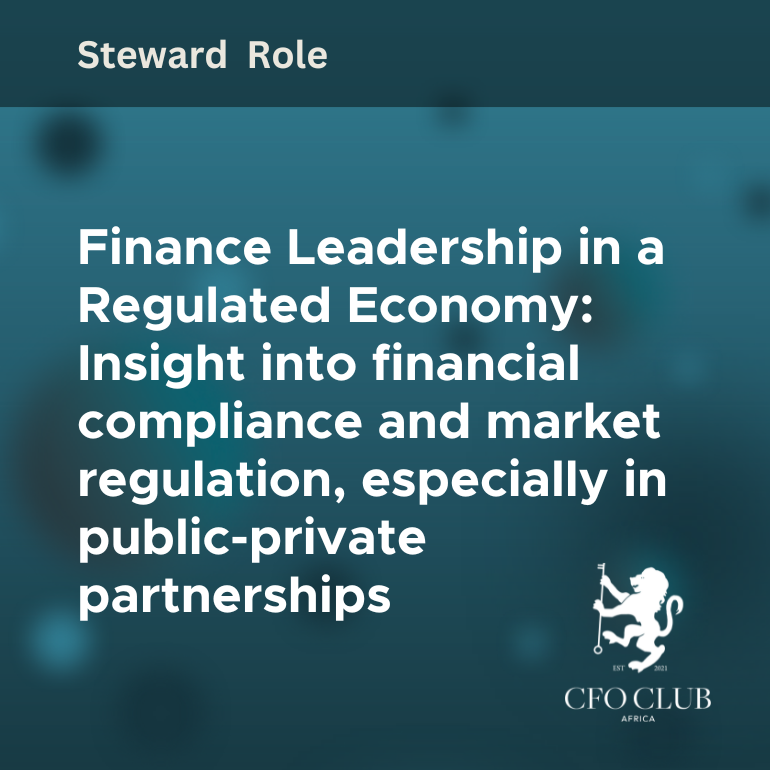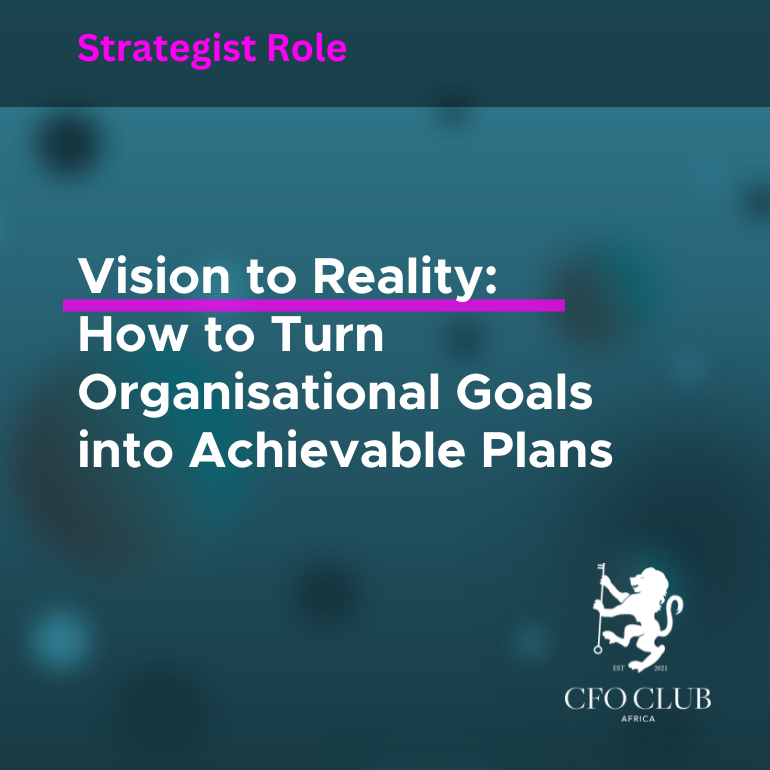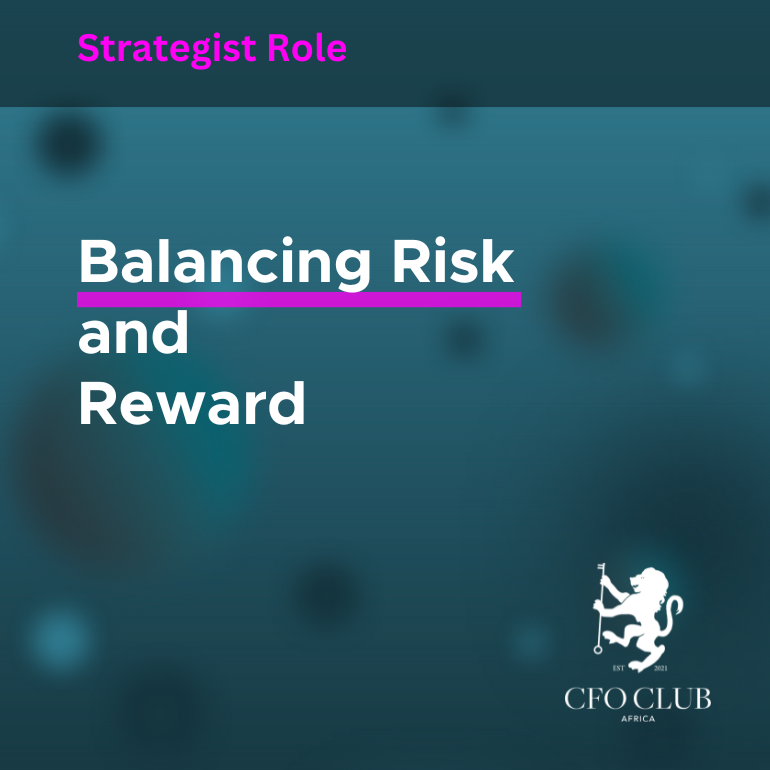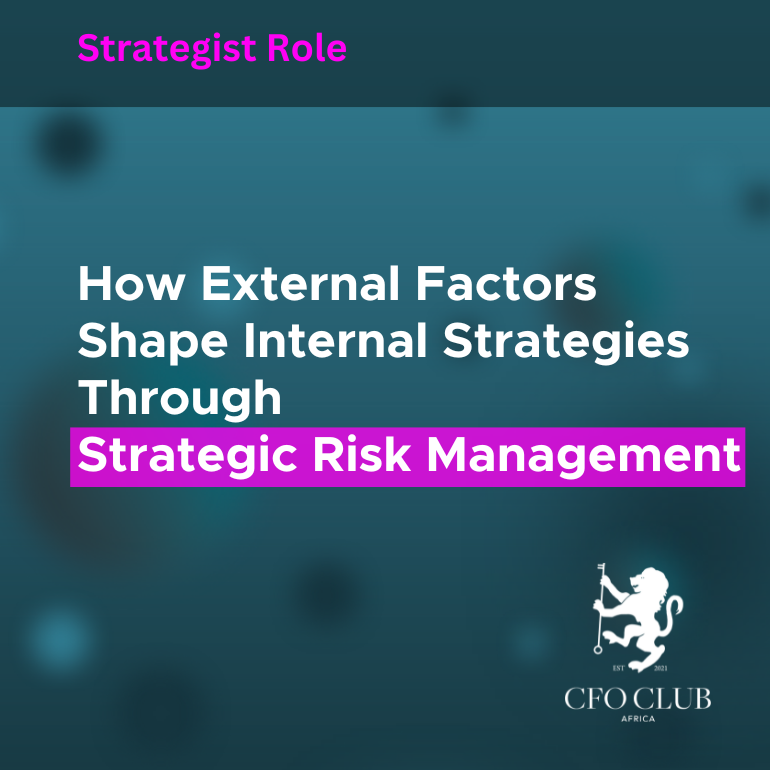Finance Leadership in a Regulated Economy: Insight into financial compliance and market regulation, especially in public-private partnerships
Economic regulation shapes the way businesses operate, invest, and compete. For Chief Financial Officers (CFOs), it is not just another compliance requirement. It is a landscape of rules, risks, and opportunities that must be navigated with precision. Whether dealing with utilities, financial services, infrastructure, or emerging industries, regulation determines how markets function and how private organisations interact with the public sector. For CFOs engaged in public-private partnerships (PPPs), this toolkit is especially vital.
Understanding the Regulatory Environment
At its core, economic regulation refers to government intervention in markets to ensure fairness, efficiency, and sustainability. It covers pricing frameworks, competition rules, licensing, disclosure requirements, and reporting obligations. For a CFO, the first responsibility is to understand the regulator’s objectives. A regulator may prioritise affordability for consumers, sustainability for the environment, or stability for investors. Aligning financial strategies with these objectives allows a company to remain compliant while securing its own long-term viability.
The regulatory environment is never static. Rules evolve with political priorities, social pressures, and technological disruption. CFOs must therefore develop a proactive system for monitoring regulatory changes. This means not only reading official pronouncements but also engaging with regulators, industry bodies, and advisory forums. By building these relationships, finance leaders can anticipate shifts before they become binding, allowing the business to adjust with minimal disruption.
Financial Compliance as Strategic Defence
Compliance with economic regulation is often seen as a legal or operational burden. In reality, it is a strategic defence mechanism. Non-compliance carries reputational damage, legal costs, fines, and in some cases, loss of licence to operate. For CFOs, robust compliance frameworks protect shareholder value and reassure investors.
Practical tools in this area include:
- Compliance dashboards: Bringing together reporting obligations, deadlines, and responsibilities in one place.
- Internal controls: Ensuring segregation of duties and traceable authorisations for regulated activities such as tariffs, procurement, and subsidies.
- Audit trails: Maintaining clear records that demonstrate compliance, not just in practice but in appearance. Regulators increasingly require evidence of governance, not merely outcomes.
A CFO who invests in these systems reduces the risk of costly investigations while building credibility with oversight bodies.
Pricing and Tariff Management
One of the most visible aspects of economic regulation is price control. In sectors such as energy, telecommunications, water, and transport, regulators often cap the prices companies can charge. CFOs must master the methodologies regulators use, whether cost-plus, rate-of-return, or incentive-based frameworks.
For example, a rate-of-return framework may allow a company to recover costs plus a regulated margin. A CFO must ensure that capital investment, depreciation schedules, and cost allocations are properly documented to justify the tariff application. In an incentive-based model, where efficiency gains are shared between the company and its customers, the CFO’s role is to identify operational improvements and translate them into financial models regulators will accept.
This balancing act between compliance and profitability is one of the most complex yet value-adding areas of financial leadership.
Public-Private Partnerships: A CFO’s Stress Test
PPPs are an area where economic regulation and financial stewardship collide most visibly. Governments rely on private capital to fund infrastructure and services, while ensuring affordability and public accountability. For CFOs, this creates both risk and opportunity.
The PPP toolkit must include:
- Risk-sharing models: Understanding how construction risk, demand risk, and operational risk are divided between public and private parties.
- Financial modelling under regulatory assumptions: Building models that incorporate regulated tariffs, government subsidies, or revenue guarantees.
- Contractual compliance: Ensuring the company’s obligations under concession agreements, service standards, and performance penalties are tracked in real time.
A failure to master these areas can derail an otherwise promising project. On the other hand, a CFO who brings transparency, discipline, and foresight to PPPs positions the organisation as a trusted partner to government.
Regulation as a Driver of Innovation
It is easy to see regulation as restrictive. Yet history shows that economic regulation often drives innovation. When emission standards tightened, the automotive industry developed cleaner engines. When financial disclosure rules expanded, companies invested in digital reporting tools that improved internal efficiency. For CFOs, the challenge is to identify the opportunity side of regulation.
This requires shifting the conversation inside the company. Instead of presenting regulation as a cost centre, the CFO can demonstrate how regulatory-driven initiatives such as better governance, transparent reporting, and sustainable investment can build competitive advantage. In PPPs, meeting or exceeding regulatory standards can even position a company for preferential access to new contracts.
Building the CFO’s Toolkit
To operate effectively under economic regulation, CFOs must equip themselves with a set of tools and mindsets:
1. Regulatory mapping: A live, centralised record of all relevant economic regulations, deadlines, and key contacts.
2. Scenario analysis: Financial models that test the impact of regulatory changes, such as new price caps or reporting requirements.
3. Stakeholder engagement: Active participation in regulator consultations, industry associations, and cross-sector dialogues.
4. Integrated reporting: Moving beyond financials to demonstrate compliance, environmental responsibility, and social contribution.
5. Training and culture: Embedding regulatory awareness into the finance team so compliance is everyone’s responsibility, not just the legal department’s.
Conclusion: The CFO as Guardian of Market Integrity
Economic regulation is not a side issue. It defines the terms of competition, partnership, and investment. For CFOs, mastering this space is not optional. It is central to their role as guardians of financial sustainability and organisational trust.
In public-private partnerships, where private profit meets public accountability, the stakes are even higher. Here the CFO is not only a financial steward but also a custodian of societal trust. The toolkit outlined above is designed to help finance leaders step confidently into this space, prepared not just to comply but to contribute to a stable, fair, and innovative economic environment.





